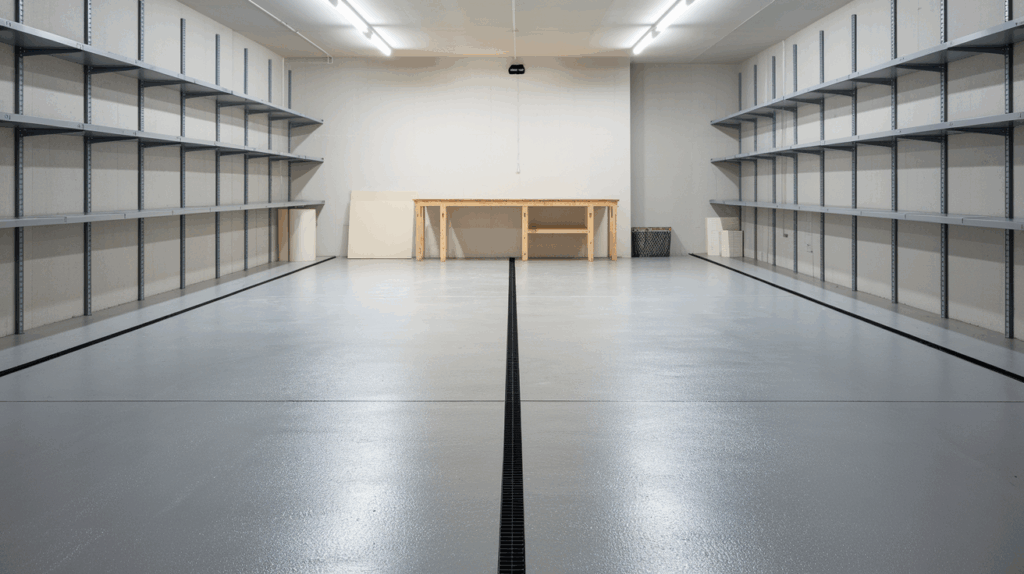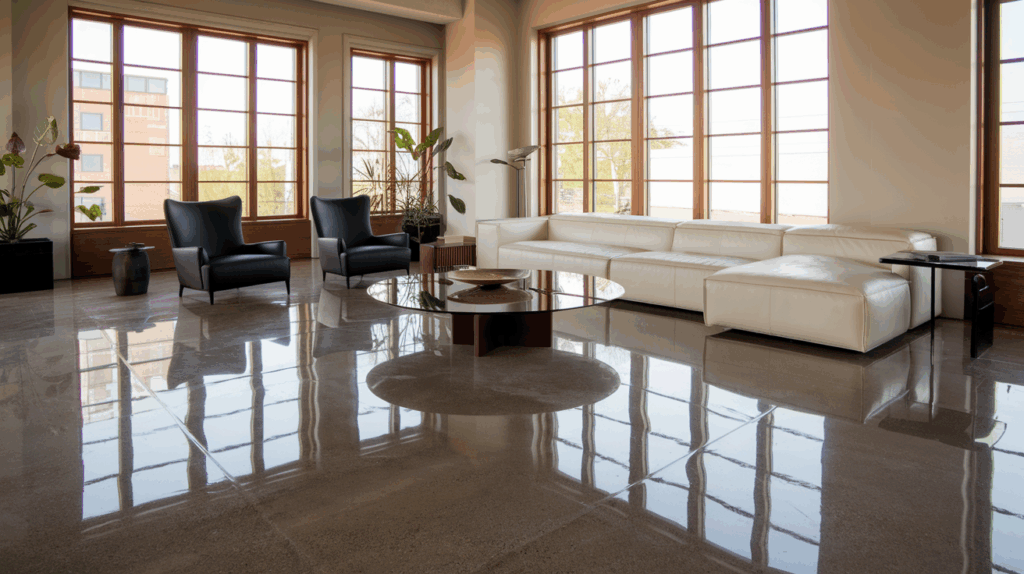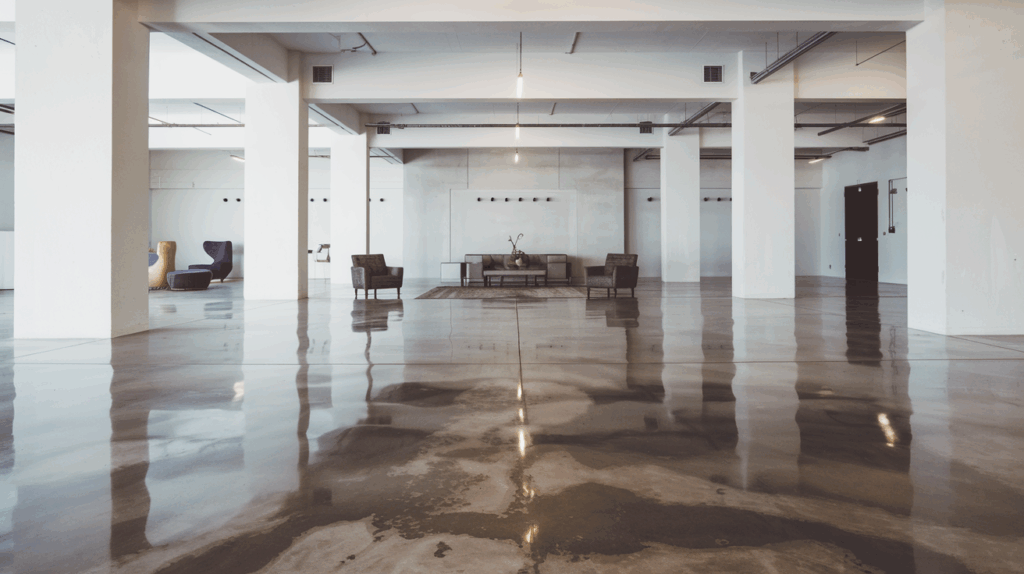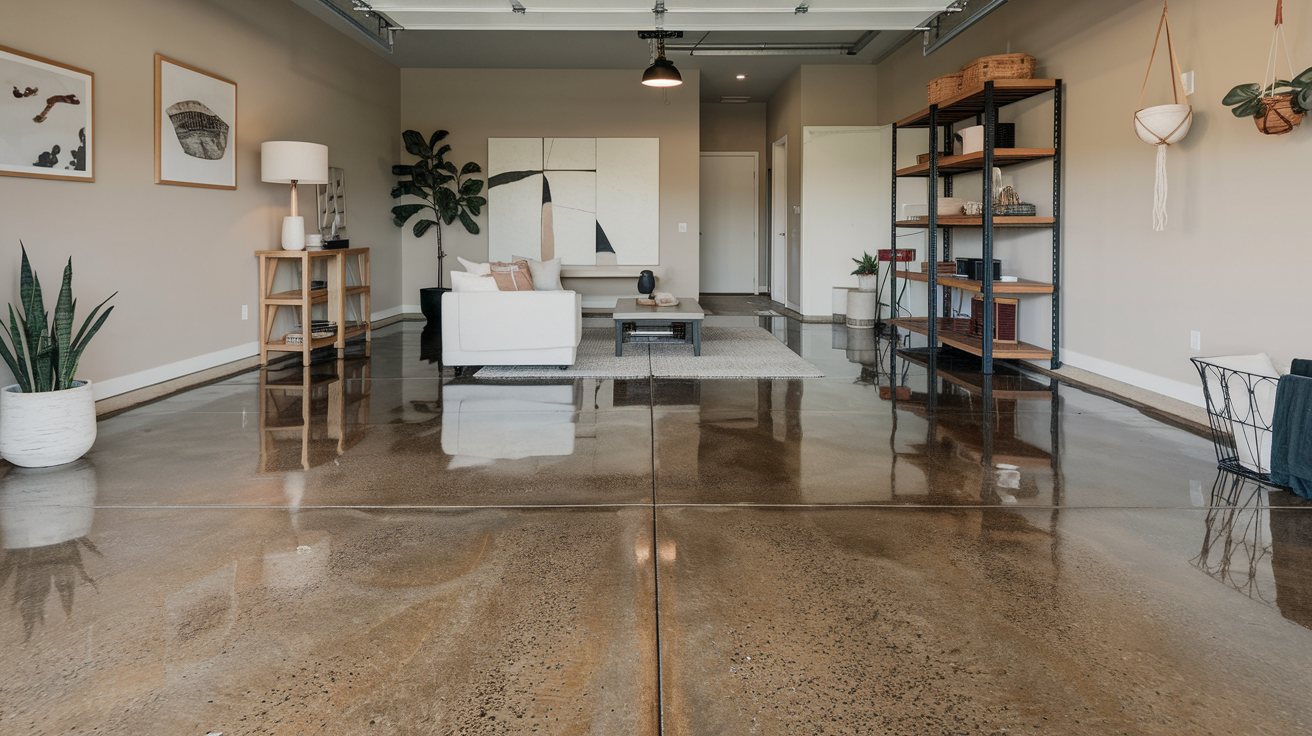Concrete floors are growing in popularity due to their durability, low maintenance, and unique aesthetic appeal.
When deciding on flooring options, concrete offers a broad range of possibilities, from basic to highly decorative finishes.
However, understanding the cost of concrete flooring is essential for budgeting, especially when considering factors like installation, finishes, and design complexity.
In this article, I’ll break down the costs associated with concrete floors, compare them to other materials, and help you understand the factors that can influence the final price.
Why Choose Concrete Floors?

Concrete flooring stands out as one of the most cost-effective options, especially considering its longevity and low maintenance requirements.
Compared to wood, tile, and carpet, concrete floors are incredibly durable, resistant to damage, and offer a modern, sleek look.
Concrete is also incredibly versatile, offering different finishes like polished, stained, and stamped designs, allowing you to choose a style that matches your aesthetic preferences.
Plus, when properly installed, concrete floors can last for decades, making it a sound investment for any homeowner.
Factors Affecting Concrete Flooring Costs

Several factors determine the final price of concrete floors. From the type of finish you choose to the size of the area, these elements can either drive up or reduce costs. Let’s take a closer look at these cost factors:
1. Type of Concrete Finish
The finish you choose impacts the cost. Basic gray concrete floors are less expensive, while polished or stained floors require more labor and special equipment, raising the price.
Decorative finishes, like stamped concrete or epoxy coatings, are also labor-intensive and increase the cost.
2. Area Size
Larger areas require more materials and labor, which increases the cost per square foot.
However, larger projects may benefit from bulk discounts or economies of scale that can reduce the overall cost, especially for simple designs.
3. Installation Complexity
Complex installations, such as intricate patterns, multiple layers, or custom designs, can significantly increase the cost.
The more detailed the design, the higher the labor costs and time required to complete the job.
4. Surface Preparation
If the existing floor needs to be removed or repaired, this adds to the overall cost.
Cracks or uneven concrete require additional leveling and preparation work before the new concrete can be installed, which will increase the price.
5. Labor Costs
Labor costs vary based on location and the complexity of the job. Skilled labor for decorative or specialty finishes may cost more.
Urban areas tend to have higher labor rates than rural areas due to demand and cost-of-living differences.
6. Regional Differences
Prices can fluctuate depending on where you live. Urban areas typically have higher installation and labor costs, while smaller towns or less populated regions may offer more affordable pricing.
Always get multiple quotes to ensure competitive pricing in your area.
Comparing Concrete Floors to Other Flooring Materials
When considering concrete flooring, it’s helpful to compare the costs with other flooring options to see how it stacks up. This is how concrete compares with other common materials in terms of price:
- Hardwood Floors: Hardwood flooring is beautiful but costly, ranging from $6 to $12 per square foot for materials. Installation adds another $3 to $5 per square foot. While durable, hardwood requires regular maintenance and is prone to scratches and dents.
- Tile Floors: Ceramic or porcelain tile costs between $5 and $15 per square foot for materials, with installation adding $4 to $6 per square foot. Tiles are durable and easy to clean, but may need grout sealing and can crack if heavy objects fall on them.
- Carpet: Carpet is affordable, costing $2 to $5 per square foot, but it requires frequent cleaning and wears out faster in high-traffic areas. While initial costs are low, ongoing maintenance costs can add up over time.
- Vinyl Flooring: Vinyl flooring is cost-effective, ranging from $2 to $7 per square foot. It mimics hardwood or tile, making it a budget-friendly option, but it lacks the long-term durability of concrete and isn’t suitable for high-traffic areas.
Concrete Flooring Cost Breakdown: How Much Will You Pay?

To provide more clarity, here’s a breakdown of what you can expect to pay for different types of concrete floors:
- Basic Concrete Floors: For plain, gray concrete, you’ll typically pay around $2 to $6 per square foot. This price includes the cost of materials and installation, but doesn’t account for any special finishes or treatments.
- Polished Concrete Floors: Polished concrete flooring starts around $3 to $8 per square foot. If you want a high-gloss finish, expect to pay between $5 and $12 per square foot for a professionally polished floor. The process involves several grinding steps and requires specialized equipment.
- Stained Concrete Floors: Staining concrete is a cost-effective way to add color to your floors. The cost generally ranges from $4 to $8 per square foot, depending on the complexity of the stain and the number of coats.
- Stamped Concrete Floors: Stamped concrete, which replicates the look of brick, stone, or tile, can cost between $8 – $15 per square foot, with high-end designs going up to $30 or more per square foot. The price includes both the labor-intensive stamping process and any additional treatments or colors.
- Epoxy Coatings: If you want a shiny, durable finish for your garage or basement floor, epoxy coatings are a great choice. Epoxy floors typically cost between $5 – $12 per square foot, depending on the type of coating used and the size of the area.
Additional Costs to Keep in Mind
Apart from the basic costs of the flooring material and installation, there are some other costs you should consider:
| Cost Item | Description | Estimated Cost |
|---|---|---|
| Surface Preparation | Cleaning, leveling, or repairing the existing surface. | $1 to $3 per square foot |
| Removing Old Flooring | Demolition fees for removing old flooring (carpet/tile). | $1 to $3 per square foot |
| Reinforcement | Adding steel mesh or rebar for high-traffic areas. | $0.20 to $0.30 per square foot |
| Sealants and Finishes | Applying protective sealant or decorative finish. | $2 to $6 per square foot |
| Additional Labor | Higher labor rates for complex designs or finishes. | Varies depending on complexity |
Tips for Saving Money on Concrete Floors
- Choose Simpler Finishes: Opt for basic gray concrete or simple stains, which will cost significantly less than polished or stamped finishes.
- Compare Multiple Quotes: Always get quotes from a few contractors to ensure you’re getting the best deal. Make sure the quotes include all aspects of the project, including labor, materials, and additional services.
- DIY for Smaller Projects: If you’re working on a small area like a basement or garage, consider a DIY approach. Epoxy coatings, for instance, can be applied by homeowners with a bit of preparation, saving on labor costs.
- Consider Larger Areas: Larger areas often cost less per square foot, as you benefit from economies of scale. If you’re remodeling a larger space, it might make sense to do it all at once to save money.
Conclusion
Concrete floors offer an excellent balance between cost, durability, and aesthetic flexibility.
With a wide range of finishes and treatments available, you can customize the look of your concrete floor while staying within budget.
The initial cost might be slightly higher than other materials, but concrete floors last longer and require far less maintenance over time.
No matter if you opt for a basic finish or a high-end decorative style, concrete is a reliable and cost-effective choice for both residential and commercial spaces.
Keep these factors in mind when budgeting for your flooring project to ensure the best value for your money.

